Sage The Fast Slow Go review: we tried Sage's latest multi-cooker
We put Sage's latest multi-cooker to the test in this Sage The Fast Slow Go review, making risotto, curry, and rice. Here's how it went.

The Fast Slow Go is a versatile multicooker that does everything you’d expect, and its main selling feature is the automatic pressure release that takes the stress out of pressure cooking. The six-litre capacity is big enough for six to eight person recipes and I found it easy to get to grips with.
-
+
Automatic pressure release
-
+
Good capacity
-
+
8 pressure settings
-
+
Controls are easy to use and clearly laid out
-
+
Handles on the base unit make it easy to move
-
+
Keep warm function
-
+
Choose between pressure cook and slow cook for several of the pre-sets
-
-
Cluttered fascia
-
-
Expensive
-
-
Not recommended to wash cooking bowl in dishwasher
-
-
Hinged lid is fiddly to remove
-
-
Lid marks easily with fingerprints
Why you can trust Ideal Home

In case you’ve not heard of the brand, Sage is a manufacturer of high-end kitchen appliances, and the Fast Slow Go is their newest multicooker. It’s slightly more affordable than their other model, the Fast Slow Pro, but it’s still expensive compared to others on the market.
Take a look at the best multi-cookers
Multicookers are useful gadgets that can replace several other kitchen appliances such as the best slow cookers, rice cookers and pressure cookers so they’re often worth the investment.
Sage The Fast Slow Go
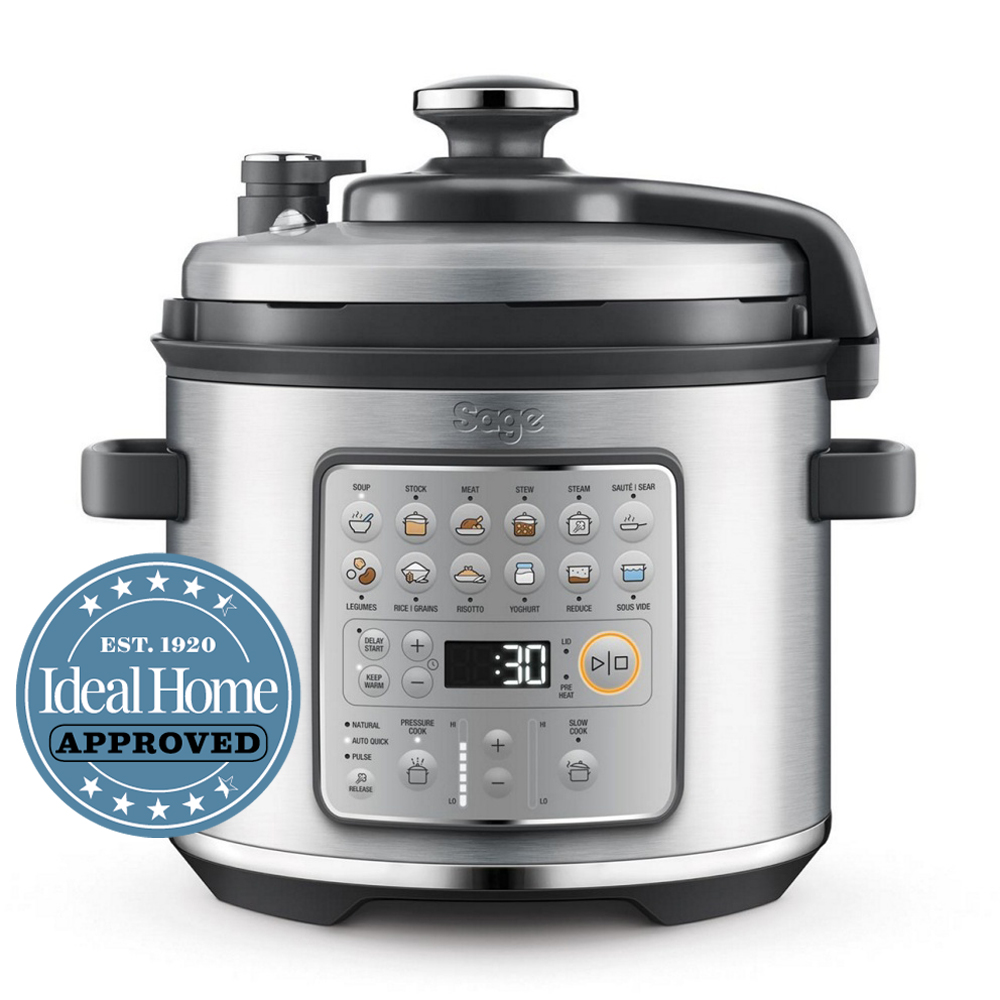
Specs
- Power: 1100W
- Capacity: 6 L
- Pre-sets: 8 pre-set food programs
- Cooking functions: Pressure cook, slow cook, steam, sauté/ sear, sous vide, reduce
- Weight: 6.7kg
- Size: 33.3 x 31.3 x 34.7 cm (h x w x d)
- Included: Stainless steel cooking bowl, stainless steel trivet
Unboxing the Sage Fast Slow Go
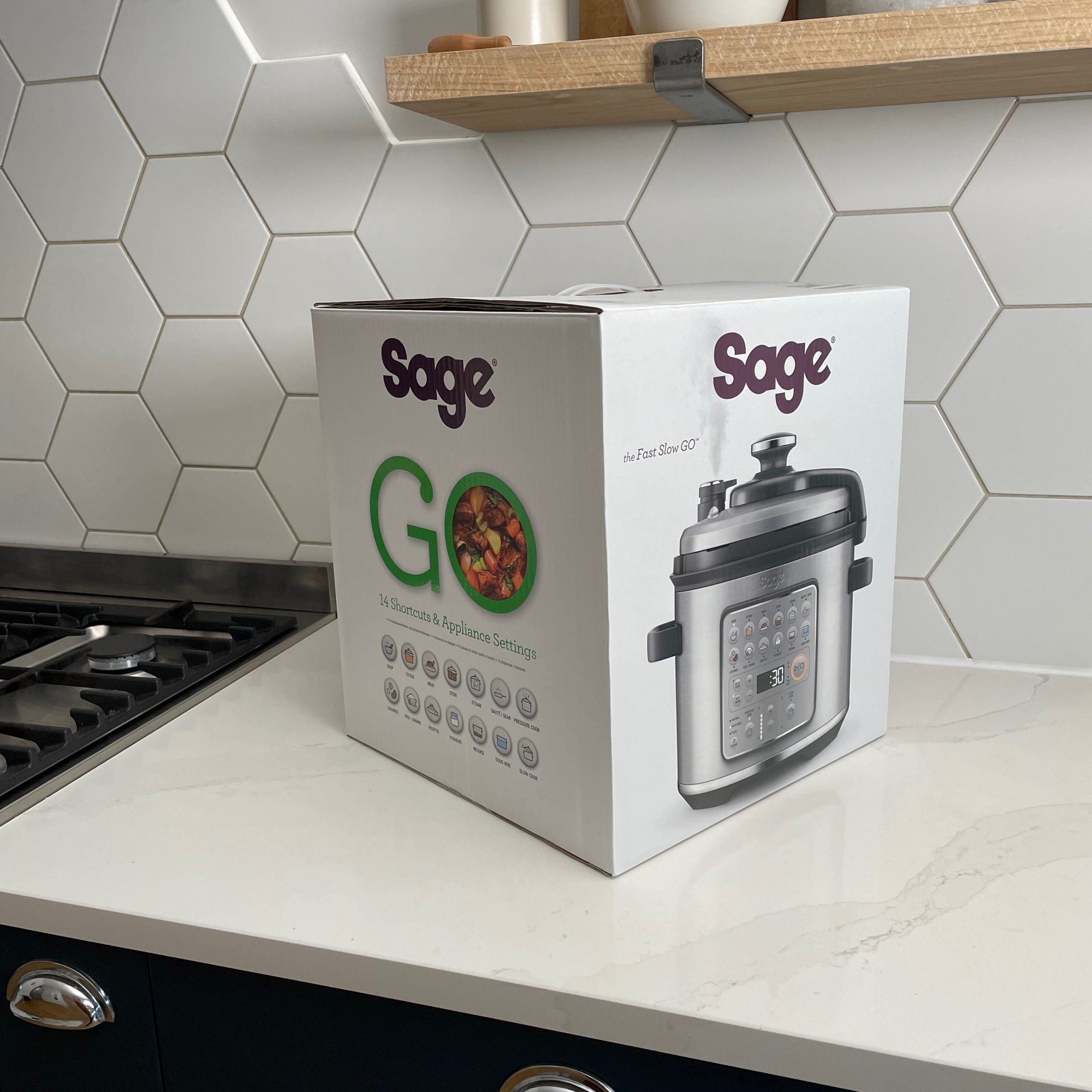
The Sage the Fast Slow Go seems bulky compared to some other multicookers I’ve reviewed but actually the footprint is similar. The large easy-grip handles on both sides mean it’s not a struggle to lift it out of the box and move around the kitchen, but at almost seven kilos it’s a tad heavy. Disappointingly, there were two big chunks of polystyrene in the box, which isn’t readily recycled by UK councils, so will likely end up in landfill and I think Sage could improve this packaging by replacing these with cardboard inserts.
On first impressions the front control panel is quite cluttered, this is because each cooking function has its own button. What this does mean though, is that there are no complicated menus to scroll through and it’s really clear what the available cooking functions are, and how to adjust them.
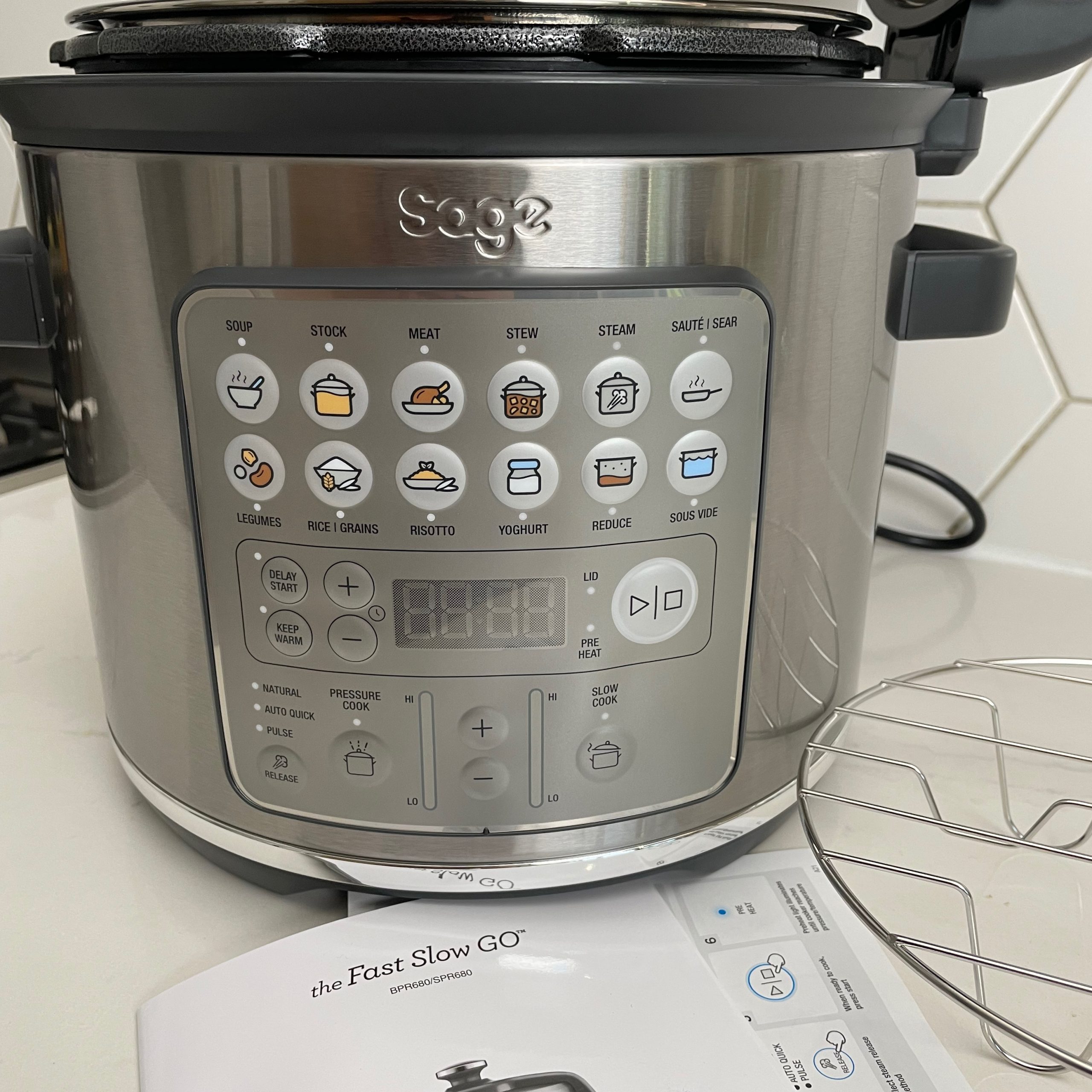
The lid is hinged, which is unusual for a multicooker, to remove it you have to unscrew a nut on the inside, this isn’t difficult but it’s more fiddly than I’d like. There’s a big knob on the top of the lid that twists to lock it into position for cooking. There’s also a steam release valve that can be moved manually, but when pressure cooking you don’t need to touch it. You can choose one of the three automatic steam venting methods and allow the multicooker to take control of this stage for you – perfect if you’re nervous about pressure cooking.
There’s a legume and grain cooking chart included in the box and an accompanying recipe book available to download from the Sage website, which is a useful starting point if you’re new to multicookers.
Cooking in the Fast Slow Go
When you first switch on the Fast Slow Go it prompts you to set the altitude which is a bit unusual and after some Googling, I managed to find out the altitude in my area so I could set it and get going. Then it’s just a case of choosing one of the following cooking modes: steam, sauté/ sear, reduce, sous vide, pressure cook or slow cook. Alternatively, there are eight different food pre-sets which are: soup, stock, meat, stew, legumes, rice/ grains, risotto, or rice.
Every cooking mode and pre-set has adjustable time and temperature options and having all the buttons clearly laid out on the control panel makes it really user-friendly. Some of the food pre-sets like meat and stew can be either pressure cook or slow cook depending on your preference, which is useful and means you can tailor these functions to your recipe.
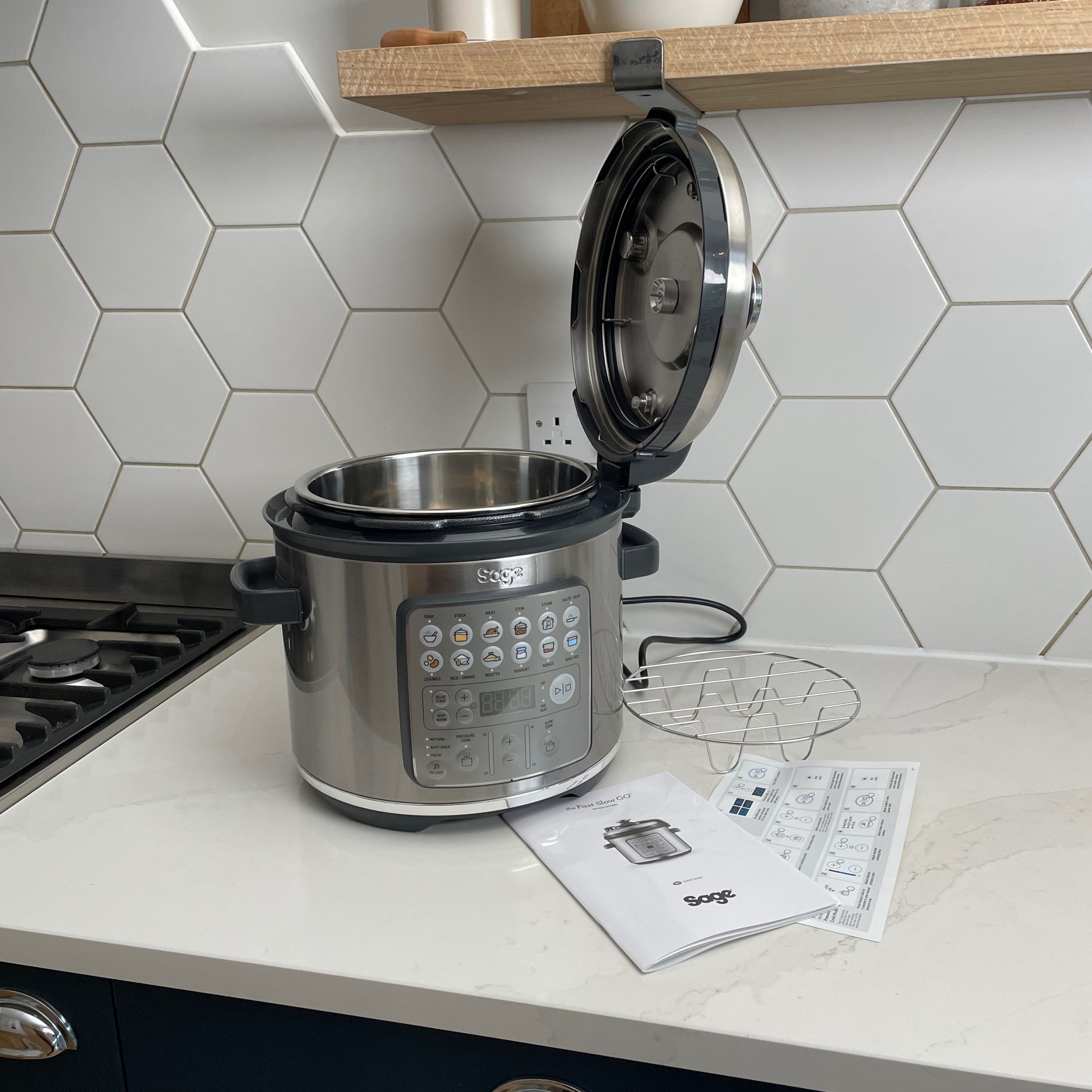
There’s a keep warm function that, if activated, will kick in at the end of cooking and keep your food warm for up to six hours, so if the doorbell rings just as your dinner is ready, it’ll stay nice and warm. The delay start feature allows you to set cooking functions in advance so it’ll start cooking while you’re at work and dinner will be ready and waiting when you get home.
The pressure cook food pre-sets each have a default steam release method, or for manual pressure cooking you can choose between natural, pulse or auto quick steam release and all are performed automatically, which in my opinion is the greatest selling point of the Fast Slow Go.
Cooking Risotto in the Fast Slow Go
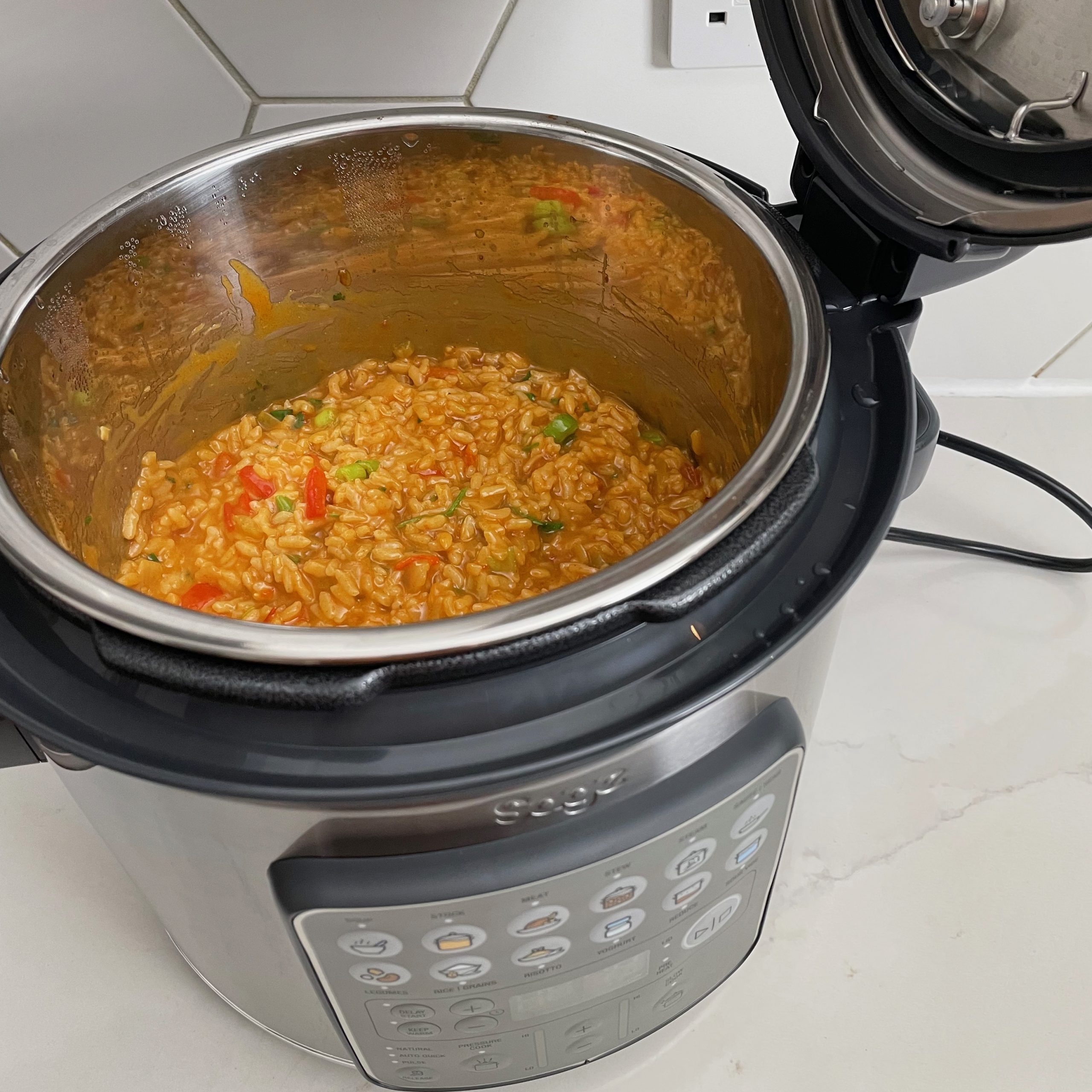
After browsing the downloadable recipe book on the Sage website, I was intrigued by the Mexican risotto recipe, apologies to all the Italians and Mexicans who might be cringing at this combination of cuisines! The recipe starts by using the sauté/ sear function to cook off the onions and some of the other ingredients. It took five minutes to preheat and then you just use it like a regular frying pan, and it means there’s only one pot to wash at the end.
After sauteing and adding the rest of the ingredients, I just had to seal the lid and press the risotto button, then start, simple as that. This is a pressure cooking program that took seven minutes to preheat, cooked for eight and a half minutes, then automatically released the pressure which took just under two minutes. So in less than 18 minutes and without the arm ache usually associated with making a risotto, it produced a perfectly cooked, creamy risotto. Having been sceptical about making a risotto without all the stirring, I was pleasantly surprised at the result, it tasted great, and the rice had the perfect texture.
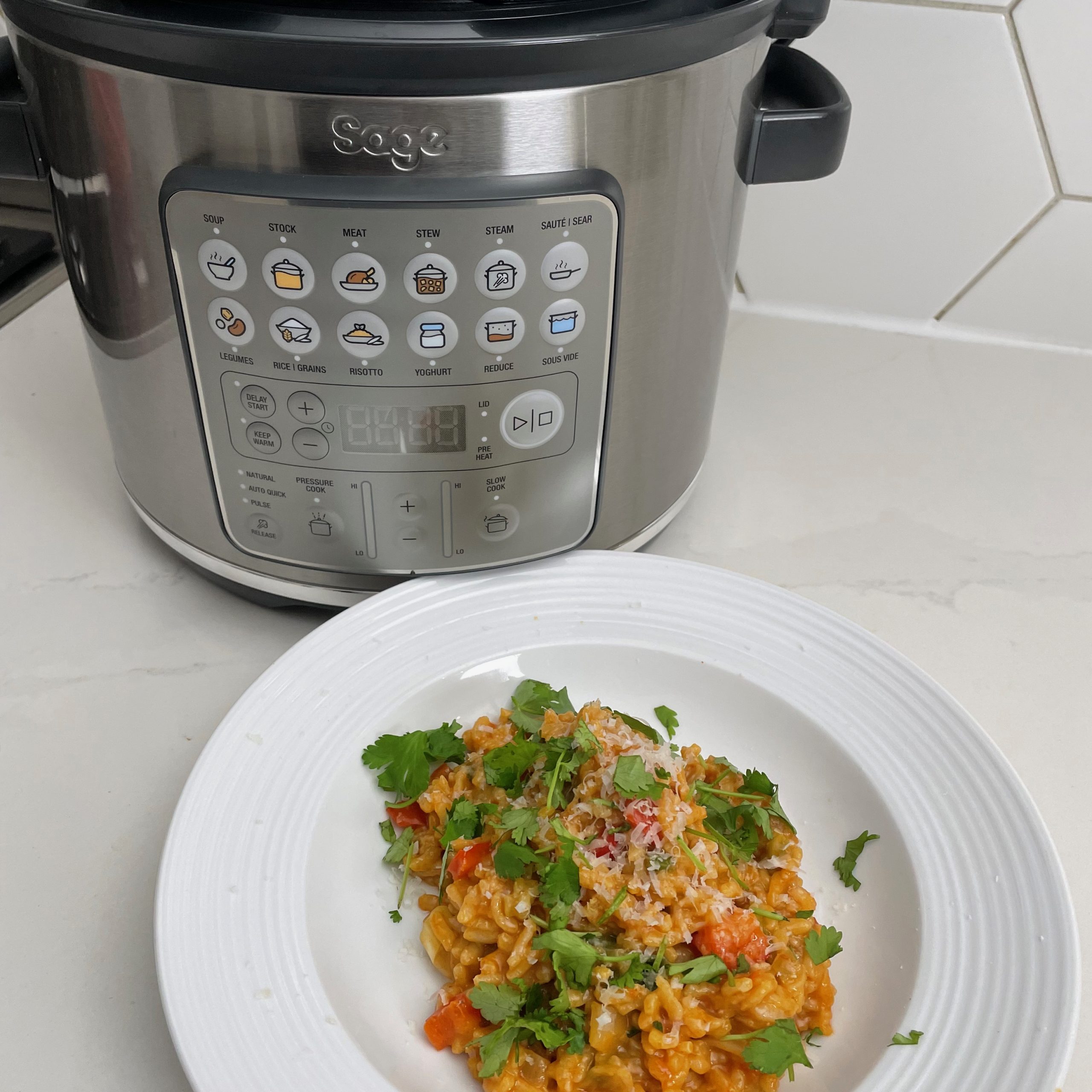
Steaming broccoli in the Fast Slow Go
The instruction book doesn’t give information on cooking times for steaming, so I had to wing it a bit. I added a cup of water to the cooking pot and put the broccoli on the steam rack. But I had to leave the florets quite large so they didn’t fall through the rack into the water below. I turned the steam setting on, made sure the pressure valve was open and guessed at three minutes. It took nine and a half minutes to preheat and as luck would have it, after steaming for three minutes the broccoli was perfectly cooked.
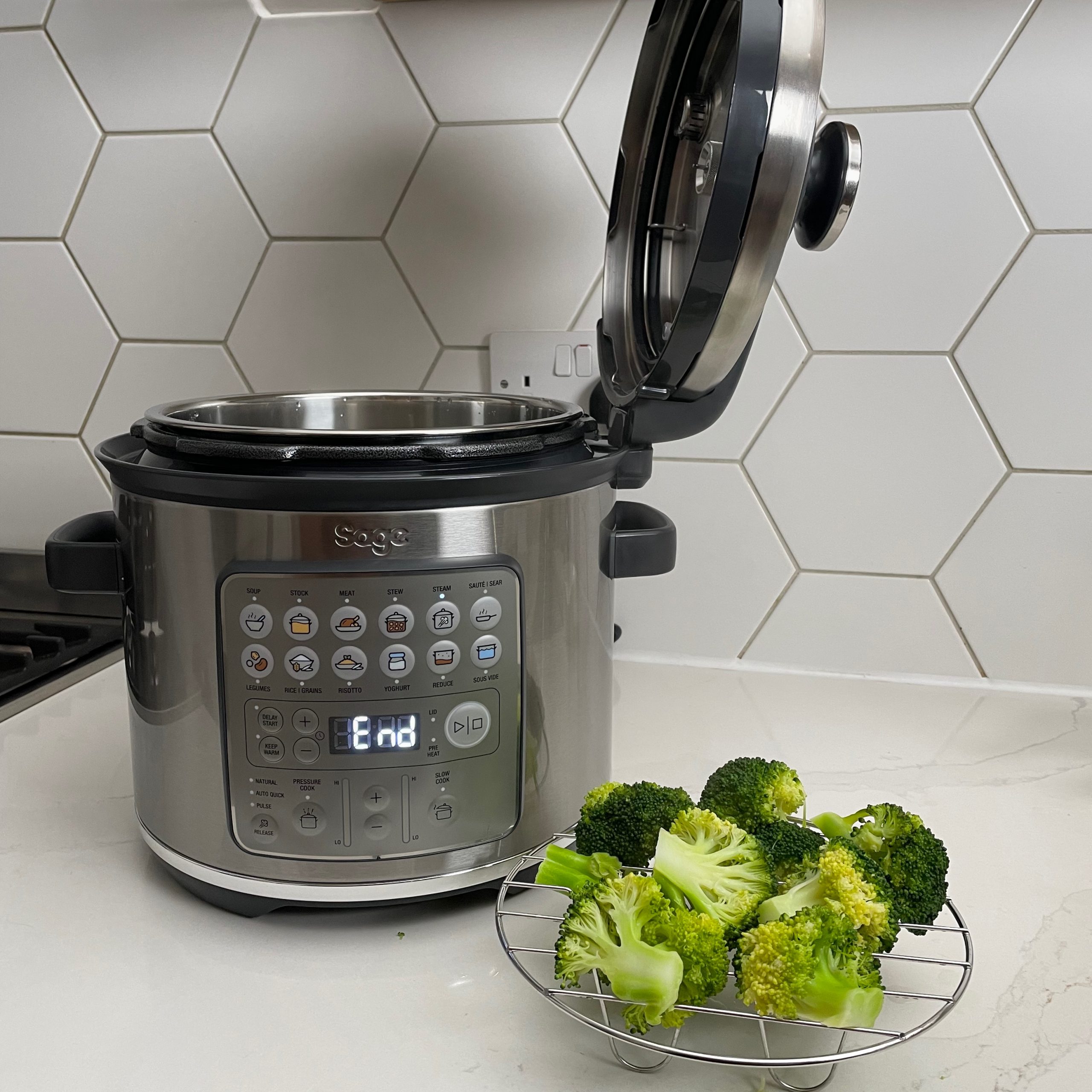
It was tricky to remove the rack without all of the broccoli falling into the water so if you’re planning to do lots of steaming, I’d advise buying a steam basket that fits the pot. The lack of information on cooking times means you’ll have to experiment to get the perfect results for different vegetables, but once you’ve cracked it, this will be a useful function.
Cooking with the Legume pre-set in the Fast Slow Go
Next, I attempted another recipe from the recipe book, this time I tried the Butter Chickpeas which uses dried chickpeas cooked on the Legume pre-set. I softened the onions, ginger and garlic using the sauté/ sear function, which can be set to one of three temperatures. Once all the ingredients were in the pot, I sealed it up, hit the legume pre-set and adjusted the time to 50 minutes. The default steam release for legumes is natural and at the end of cooking it released the steam slowly over 22 minutes.

I rarely cook with dried chickpeas, it always seems like too much faff, but the end result was a delicious curry with a deep flavour and easily enough for six people. The dried chickpeas had cooked beautifully, they were soft but still had a good texture and hadn’t broken down or gone mushy.
Cooking Rice in the Fast Slow Go
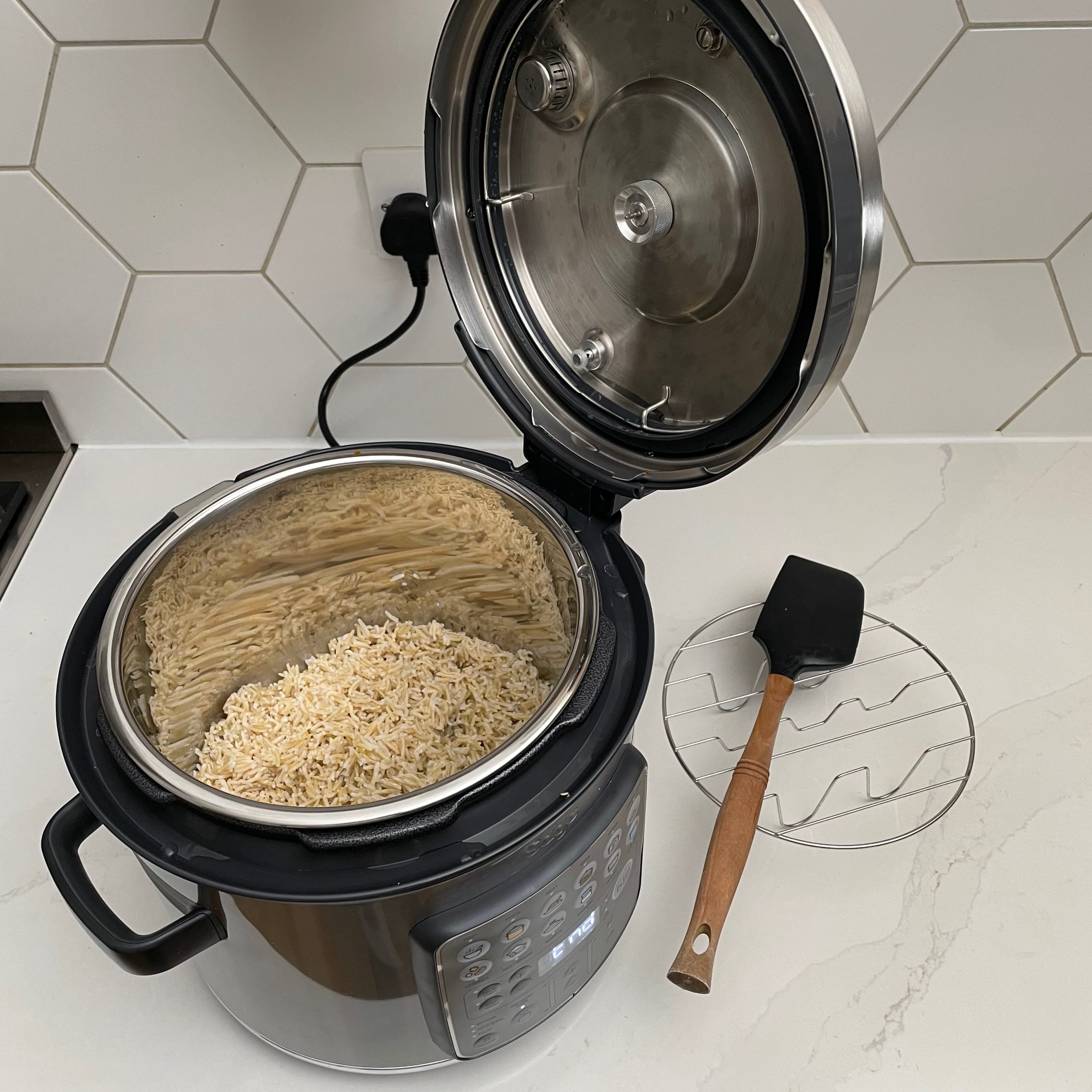
To accompany the curry, I just cooked some simple brown basmati rice. A leaflet that comes in the box gives rice and water quantities along with cooking times, so it made sense to follow this. I used the rice pre-set and adjusted the time to 15 minutes. Including the preheat and the pressure release it took around 29 minutes, which is slightly longer than cooking it on the hob, but that’s fine by me as it’s a completely hands-off process. The finished rice had the perfect texture, so if you struggle to cook rice, this is the way to go.
See also: the best rice cookers
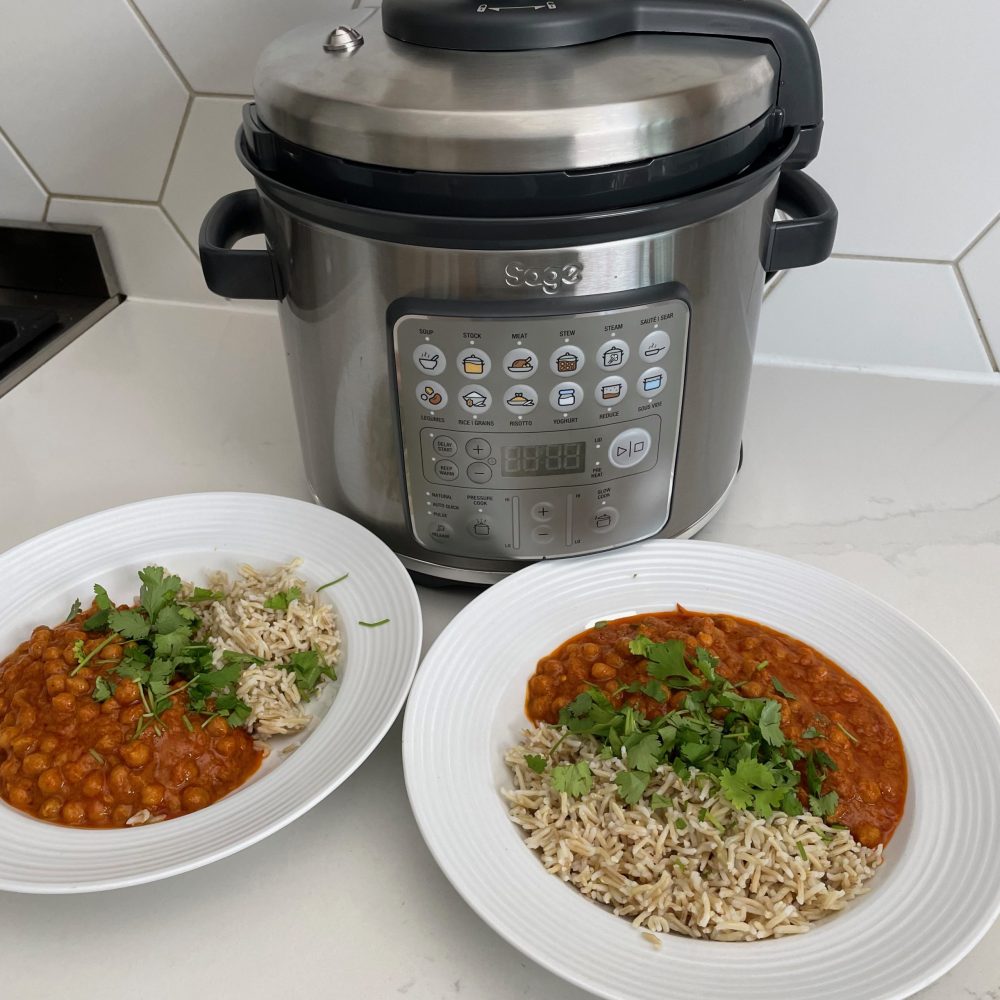
Cleaning
The instruction manual says that the cooking pot is dishwasher safe, but it is advisable to wash it by hand, which feels a bit like they’re teasing me with the idea of putting it in the dishwasher whilst also telling me not to. It’s easy enough to wash by hand though, as is the steam rack.
The lid marks with fingerprints and although it’s easy to wipe over, removing it for a thorough clean is a bit of a pain and certainly more effort than other multicookers. But once it’s off, cleaning it and disassembling the pressure release valve is pretty standard.
Should you buy the Sage the Fast Slow Go?
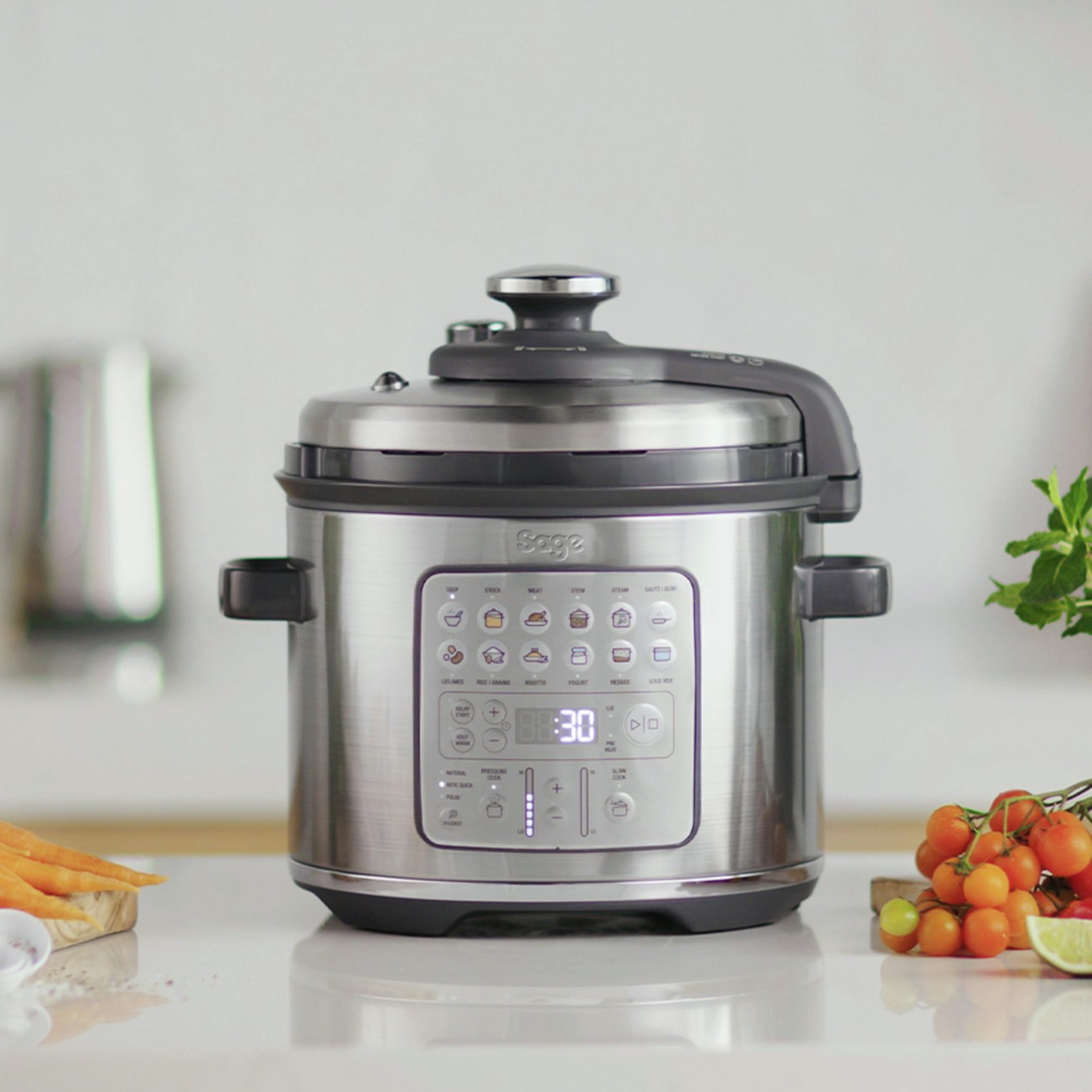
The Fast Slow Go is more expensive than other multicookers such as the Drew & Cole Cleverchef Pro Multicooker, but what sets it apart is the automatic steam release that really takes the stress out of the sometimes-daunting task of pressure cooking. The cluttered control panel means that it’s not the most streamlined or attractive appliance but, that said, having all the buttons clearly laid out makes it easy to use and get to grips with. The recipes I tried from the recipe book were tasty and easy to make and I’d happily try more.
My main gripe with this multicooker is that the lid is a pain to remove for cleaning and the cooking pot is recommended to be washed by hand. But aside from these issues, it’s a great multicooker and I loved the way it takes care of the steam release for you, making it an absolute must if you’re intimidated by pressure cooking or confused by the steam release process. Even if you’re a pressure cooking pro, it’s nice to set it and walk away, knowing it’ll automatically release the steam.
About this review, and the reviewer
Helen McCue is a freelance contributor who trained as a Home Economist. After starting her career in the food industry, she moved into home appliance reviews, utilising her cooking skills and experience to put all kinds of products to the test, and over the years has reviewed hundreds of home and kitchen appliances for a variety of publications.
Having completely renovated her current house, Helen reviews kitchen appliances from her open plan kitchen at home in a beautiful Berkshire village. When she’s not working, Helen can be found enjoying the local countryside or dreaming about her next house renovation project.
Get the Ideal Home Newsletter
Sign up to our newsletter for style and decor inspiration, house makeovers, project advice and more.

After completing a Home Economics degree, Helen went on to work for the Good Housekeeping Institute and has been reviewing home appliances ever since. She lives in a small village in Buckinghamshire in the UK, where she reviews all sorts of home and garden appliances for Ideal Home using her wealth of experience.
-
 I’ve been looking for a new signature scent for my home and The White Company's new fragrance is the exact summer holiday smell I needed
I’ve been looking for a new signature scent for my home and The White Company's new fragrance is the exact summer holiday smell I neededSantorini smells fresh, summery and sophisticated
By Kezia Reynolds
-
 This £200 limited-time discount makes this Dyson vacuum cheaper than I’ve ever seen it - run don’t walk to Argos for this bargain
This £200 limited-time discount makes this Dyson vacuum cheaper than I’ve ever seen it - run don’t walk to Argos for this bargainIt's the most affordable Dyson on the market right now
By Lauren Bradbury
-
 Martin and Shirlie Kemp’s pastel flower beds have given their Victorian renovation a romantic look - how you can get the look
Martin and Shirlie Kemp’s pastel flower beds have given their Victorian renovation a romantic look - how you can get the lookTheir pastel garden is the cottage garden inspo you've been looking for
By Kezia Reynolds